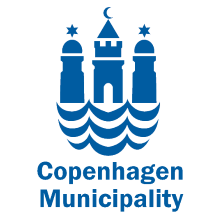Copenhagen is making its transportation system more intelligent and modernizing its traffic signals to be controlled in real time in order to further promote cycling and public transport.
Copenhagen is investing in Intelligent Transport Systems (ITS) by installing new controllers in traffic signals at the city’s 380 intersections. The new technology not only enables the city to control traffic and optimize signals in real time, resulting in more efficient flow of bikes and buses, but also decreases the energy use of traffic signals by a third. Overall, the travel time of cyclists will be reduced by 10% and travel time for buses is expected to decrease by up to 20%. The city hopes the improvements will entice even more people to partake in cycling in particular, which already accounts for 45% of commutes.
Copenhagen is also using the smart traffic signals to reduce the number of stops for cyclists by 10%, which will reduce the incidence of accidents. ITS will help Copenhagen achieve its vision to have 75% of all trips in the city be by bike, by public transport, or on foot by 2025.
25,000 tons of CO2 will be reduced by 2025 compared to 2011 levels through the city’s ITS program

The challenge
Copenhagen has an ambitious goal of becoming CO2 neutral by 2025, but also has to manage a population growth of 1,000 citizens per month, which puts a strain on the space allocated for traffic. By modernizing the city’s infrastructure, Copenhagen wants to encourage more people to take up cycling on a daily basis and further limit traffic.
Co-benefits
Economic With the upgrade of the traffic lights, the city saves money on repairs of the outdated models which experienced frequent blackouts.
Environmental The smart traffic lights help prevent congestion and decrease emissions from idle cars and trucks.
Health By prioritizing cycling, Copenhagen counteracts some of the health risks associated with a sedentary lifestyle.
About Copenhagen
Copenhagen is the capital and most populous city of Denmark. The city has a population of 763,908 (as of December 2016), of whom 601,448 live in the Municipality of Copenhagen. Copenhagen is situated on the eastern coast of the island of Zealand; another small portion of the city is located on Amager, and is separated from Malmö, Sweden, by the strait of Øresund. Originally a Viking fishing village founded in the 10th century, Copenhagen became the capital of Denmark in the early 15th century. Since the turn of the 21st century, Copenhagen has seen strong urban and cultural development, facilitated by investment in its institutions and infrastructure. Copenhagen’s economy has seen rapid developments in the service sector, especially through initiatives in information technology, pharmaceuticals and clean technology.


